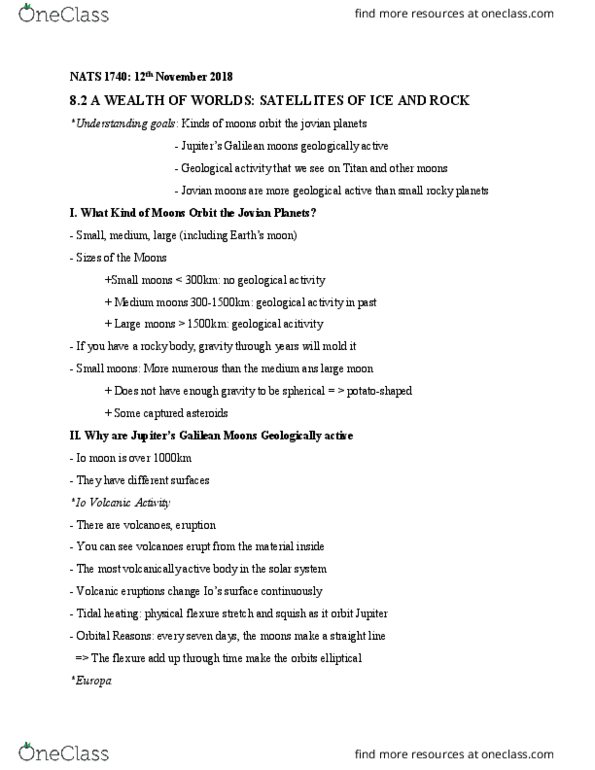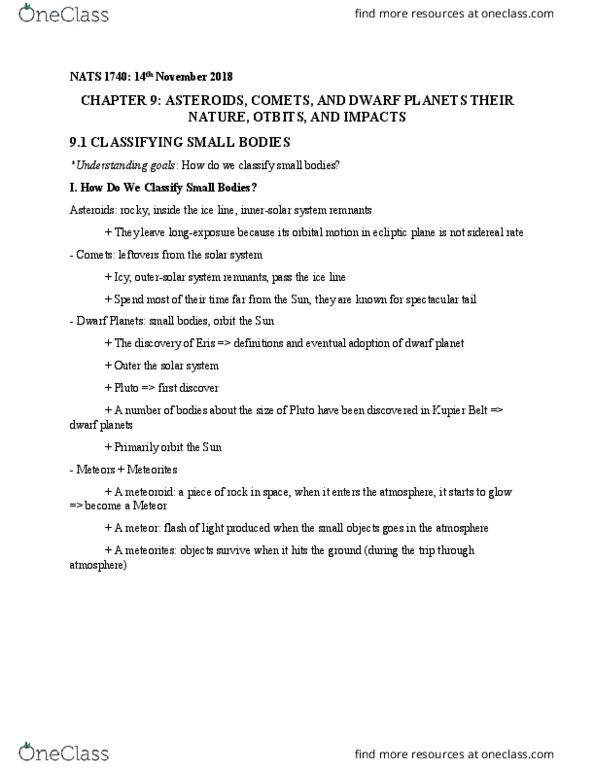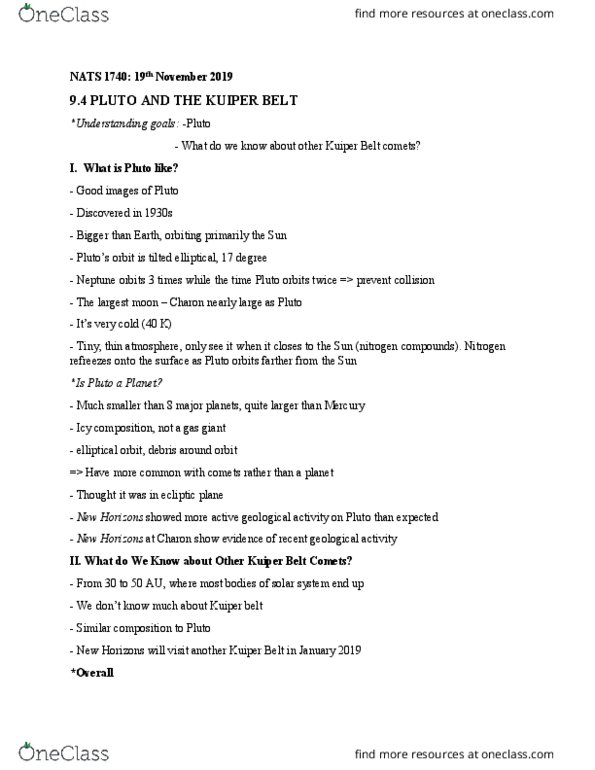NATS 1740 Lecture Notes - Lecture 31: Asteroid Belt, Ecliptic, Dwarf
NATS 1740 verified notes
31/37View all
Document Summary
Chapter 9: asteroids, comets, and dwarf planets their. Asteroids: rocky, inside the ice line, inner-solar system remnants. + they leave long-exposure because its orbital motion in ecliptic plane is not sidereal rate. + icy, outer-solar system remnants, pass the ice line. + spend most of their time far from the sun, they are known for spectacular tail. Dwarf planets: small bodies, orbit the sun. + the discovery of eris => definitions and eventual adoption of dwarf planet. + a number of bodies about the size of pluto have been discovered in kupier belt => dwarf planets. + a meteoroid: a piece of rock in space, when it enters the atmosphere, it starts to glow. + a meteor: flash of light produced when the small objects goes in the atmosphere. + a meteorites: objects survive when it hits the ground (during the trip through atmosphere) Meteorites tell us about asteroids + early solar system.




